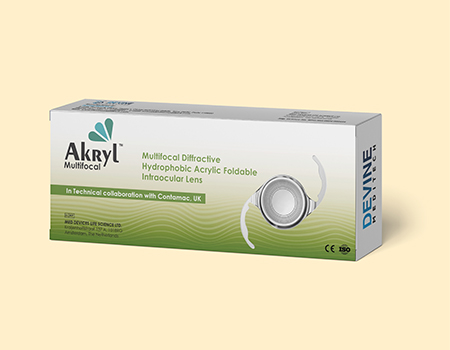
In the modern cataract- and presbyopia-correction landscape, multifocal intraocular lenses (IOLs) stand out as a powerful innovation. These advanced lenses grant patients the liberty to see clearly across various distances—near, intermediate, and far—often reducing or eliminating the need for glasses.
Multifocal IOLs are artificial lenses implanted in the eye, designed to mimic the natural flexibility of the eye’s crystalline lens. Unlike monofocal lenses, which focus on a single distance, multifocals are engineered to provide multiple focal points, delivering sharp vision at different ranges. These lenses are typically categorized into:
• Refractive multifocal IOLs: Use concentric zones of different refractive power. They depend on pupil size and precise centration and may risk glare or halos, especially in low-light settings.
• Diffractive multifocal IOLs: Use micro-structured concentric rings to split light rays into near and far focal points. They are less pupil-dependent and generally offer reliable near and distance vision, although distant intermediate vision might be less optimal.
Some lenses blend both refractive and diffractive designs to optimize visual outcomes across all distances.
At Devine Meditech, our multifocal IOLs use a hydrophobic acrylic base—a clear, robust polymer that resists long-term clouding (posterior capsule opacification or PCO) and surface protein deposition. The diffractive design on this material enables smooth transitions between focal points, reducing visual disturbances like halos and glare
Key benefits include:
• Reduced halos and glare
• Enhanced contrast sensitivity, particularly in low light
• Long-term clarity and stability, thanks to PCO resistance
• Better overall lifestyle satisfaction, from reading to driving to outdoor activities
Multifocal IOLs aren’t suitable for every patient. Ideal candidates:
1. Want to minimize reliance on glasses post-cataract surgery.
2. Have no significant corneal or retinal pathologies.
3. Possess realistic expectations about vision and potential side effects
A pre-surgical assessment—including biometry, topography, pupil dynamics, and retinal health—is crucial. Equally important? A thorough discussion of visual expectations, potential for halos or glare, and the possibility of needing a minor laser procedure or enhancement later
• Spectacle Independence: Most patients report freedom from glasses for everyday tasks—near, intermediate, and distance—with high satisfaction levels.
• Adaptation Phase: Visual symptoms such as glare or halos are common initially. Fortunately, most patients adapt within weeks to months.
• Side Effects & Management: Some may experience slight reduction in contrast sensitivity or night-time visual disturbances. Thorough pre-operative counseling and careful lens selection help minimize dissatisfaction.
Devine Meditech offers a powerful suite of hydrophobic acrylic, diffractive multifocal IOLs, designed for enhanced optical quality:
• Multi-distance vision: Ideal for reading, computing, driving, and active lifestyles
• Superior material integrity: Prevents opacification for long-term clarity
• Minimized photic phenomena: Advanced optics reduce halos/glare
• Tailored approaches: Our preoperative care ensures personalized lens selection
4. Wide Field of Vision: These lenses are great for active individuals who would prefer not to wear glasses all the time simply because they can see clearly at varied distances.

Multifocal intraocular lenses represent a transformative technology in refractive and cataract surgery. By offering seamless vision across all distances and dramatically reducing dependence on glasses, they align beautifully with Devine Meditech’s vision of enabling clearer, unencumbered sight. Yet, success hinges on selecting the right patients, employing precise surgical techniques, and offering advanced lens designs in hydrophobic acrylic. With innovation driving ongoing improvements—whether through diffractive, trifocal, EDOF, or accommodating designs—Devine Meditech remains committed to delivering vision solutions that uplift life quality.
If you’re considering spectacle-free vision after cataract or lens-exchange surgery, talk to your ophthalmologist about our multifocal IOL range—and step into a brighter, crisper tomorrow.